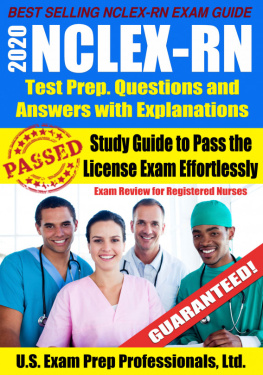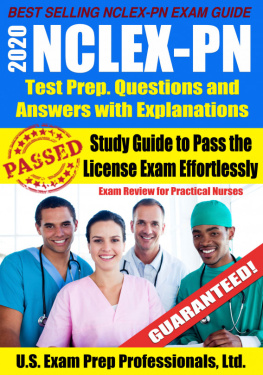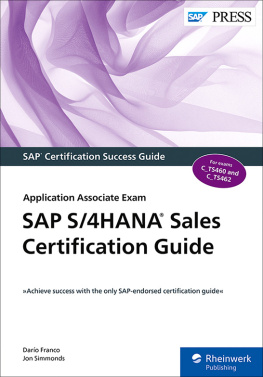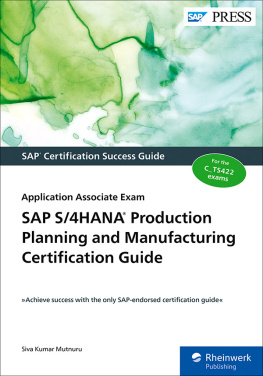About the Author
K. J. K ELLER is an associate engineer and electrical specialist with the largest international marine contractor on the East Coast, experienced in Lean Six Sigma initiatives and electrical engineering and design methods. Previous experience includes serving as the safety and compliance director, trainer, and project coordinator for one of New Englands most prominent electrical contractors.

Copyright 2013, 2007 by The McGraw-Hill Companies, Inc. All rights reserved.
Except as permitted under the United States Copyright Act of 1976, no part of this publication may be reproduced or distributed in any form or by any means, or stored in a database or retrieval system, without the prior written permission of the publisher. ISBN: 978-0-07-179203-5
MHID: 0-07-179203-1 The material in this eBook also appears in the print version of this title: ISBN: 978-0-07-179204-2, MHID: 0-07-179204-X. All trademarks are trademarks of their respective owners. Rather than put a trademark symbol after every occurrence of a trademarked name, we use names in an editorial fashion only, and to the benefit of the trademark owner, with no intention of infringement of the trademark. Where such designations appear in this book, they have been printed with initial caps. McGraw-Hill eBooks are available at special quantity discounts to use as premiums and sales promotions, or for use in corporate training programs.
To contact a representative please e-mail us at bulksales@mcgraw-hill.com. Information contained in this work has been obtained by The McGraw-Hill Companies, Inc. (McGraw-Hill) from sources believed to be reliable. However, neither McGraw-Hill nor its authors guarantee the accuracy or completeness of any information published herein, and neither McGraw-Hill nor its authors shall be responsible for any errors, omissions, or damages arising out of use of this information. This work is published with the understanding that McGraw-Hill and its authors are supplying information but are not attempting to render engineering or other professional services. TERMS OF USE This is a copyrighted work and The McGraw-Hill Companies, Inc. (McGraw-Hill) and its licensors reserve all rights in and to the work. (McGraw-Hill) and its licensors reserve all rights in and to the work.
Use of this work is subject to these terms. Except as permitted under the Copyright Act of 1976 and the right to store and retrieve one copy of the work, you may not decompile, disassemble, reverse engineer, reproduce, modify, create derivative works based upon, transmit, distribute, disseminate, sell, publish or sublicense the work or any part of it without McGraw-Hills prior consent. You may use the work for your own noncommercial and personal use; any other use of the work is strictly prohibited. Your right to use the work may be terminated if you fail to comply with these terms. THE WORK IS PROVIDED AS IS. McGRAW-HILL AND ITS LICENSORS MAKE NO GUARANTEES OR WARRANTIES AS TO THE ACCURACY, ADEQUACY OR COMPLETENESS OF OR RESULTS TO BE OBTAINED FROM USING THE WORK, INCLUDING ANY INFORMATION THAT CAN BE ACCESSED THROUGH THE WORK VIA HYPERLINK OR OTHERWISE, AND EXPRESSLY DISCLAIM ANY WARRANTY, EXPRESS OR IMPLIED, INCLUDING BUT NOT LIMITED TO IMPLIED WARRANTIES OF MERCHANTABILITY OR FITNESS FOR A PARTICULAR PURPOSE.
McGraw-Hill and its licensors do not warrant or guarantee that the functions contained in the work will meet your requirements or that its operation will be uninterrupted or error free. Neither McGraw-Hill nor its licensors shall be liable to you or anyone else for any inaccuracy, error or omission, regardless of cause, in the work or for any damages resulting therefrom. McGraw-Hill has no responsibility for the content of any information accessed through the work. Under no circumstances shall McGraw-Hill and/or its licensors be liable for any indirect, incidental, special, punitive, consequential or similar damages that result from the use of or inability to use the work, even if any of them has been advised of the possibility of such damages. This limitation of liability shall apply to any claim or cause whatsoever whether such claim or cause arises in contract, tort or otherwise. I would like to dedicate this book in loving memory of my mother, Joy P.
Wallace and my father, Robert (Bob) Wallace. They were the source of my creativity, engineering prowess, determination, and writing skills. I would also like to thank my children, Afton and Adam, and my little grandson, Giovanni, for bringing light to my life every day.
Contents
Preface
This book has been written for experienced electricians who plan to take a state required exam in order to obtain a Journeyman or Master Electricians license. We are going on the assumption that you are entering this phase of your career with a basic understanding of the electrical trade and electrical theory. One thing you need to know before you take your licensing exam is that your hands-on experience in the field will not be enough to get you a passing grade.
Many of the questions on licensing exams are based on the National Electrical Code, so you will need to have a current NEC book to study and use for reference. Some states will allow you to refer to your code book during the test, while others give no book or closed book exams. Test centers which allow open book exams will only permit you to bring your NEC code book, even though a percentage of the test questions will be on electrical theory, controls and other principals used in the safe installation of electrical work. All of the tests are timed and require a testing fee. We know your time and money are valuable, so our goal is to provide you with the study tools, references, and examples you will need to thoroughly prepare yourself to pass your licensing exam. There are over 1,500 sample test questions presented in this book in a manner which closely resembles the types of questions you may find on the licensing exam.
There are true/false and multiple-choice questions, just like on the real test. In order to increase your understanding of the questions, there are answer sheets which include cross-references to the precise article and section of the NEC from which the question is taken. The text material at the beginning of each chapter also explains applicable articles and requirements in a manner which makes even the most complicated code standards easier to understand. There are numerous Test Tips throughout the book which explain how to arrive at the correct answers. Additionally, there are Code Updates in each chapter which clarify changes in the 2011 NEC, so that you can be certain that the material you are studying is current and accurate. The NEC covers specialized installation requirements, many of which you may not have performed as an electrician, such as working in hazardous locations, or wiring for hospitals or low-voltage communications systems.
Lack of trade experience can be compensated for by studying the NEC and by taking mock exams. Thats why there are practice exams at the end of the book, so that you can get a feel for the type of material you might expect to find when you take your actual licensing exam. The purpose of this book is to help you develop your ability to understand how licensing exam questions may be written, which standards apply, and how to arrive at the most correct answers in order to receive a passing grade. K. J. Keller
Acknowledgments











 Copyright 2013, 2007 by The McGraw-Hill Companies, Inc. All rights reserved.
Copyright 2013, 2007 by The McGraw-Hill Companies, Inc. All rights reserved.